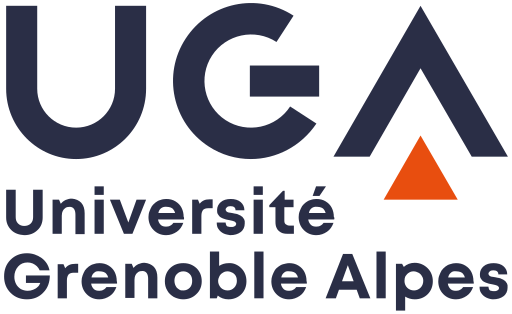The paper treats the question whether there always exists a minimal nondeterministic finite automaton of
Mots-clés : regular languages, deterministic finite automata, nondeterministic finite automata, state complexity
@article{ITA_2006__40_3_485_0,
author = {Jir\'askov\'a, Galina},
title = {Deterministic blow-ups of minimal {NFA's}},
journal = {RAIRO - Theoretical Informatics and Applications - Informatique Th\'eorique et Applications},
pages = {485--499},
publisher = {EDP-Sciences},
volume = {40},
number = {3},
year = {2006},
doi = {10.1051/ita:2006032},
zbl = {1110.68064},
language = {en},
url = {https://www.numdam.org/articles/10.1051/ita:2006032/}
}
TY - JOUR AU - Jirásková, Galina TI - Deterministic blow-ups of minimal NFA's JO - RAIRO - Theoretical Informatics and Applications - Informatique Théorique et Applications PY - 2006 SP - 485 EP - 499 VL - 40 IS - 3 PB - EDP-Sciences UR - https://www.numdam.org/articles/10.1051/ita:2006032/ DO - 10.1051/ita:2006032 LA - en ID - ITA_2006__40_3_485_0 ER -
%0 Journal Article %A Jirásková, Galina %T Deterministic blow-ups of minimal NFA's %J RAIRO - Theoretical Informatics and Applications - Informatique Théorique et Applications %D 2006 %P 485-499 %V 40 %N 3 %I EDP-Sciences %U https://www.numdam.org/articles/10.1051/ita:2006032/ %R 10.1051/ita:2006032 %G en %F ITA_2006__40_3_485_0
Jirásková, Galina. Deterministic blow-ups of minimal NFA's. RAIRO - Theoretical Informatics and Applications - Informatique Théorique et Applications, Tome 40 (2006) no. 3, pp. 485-499. doi : 10.1051/ita:2006032. https://www.numdam.org/articles/10.1051/ita:2006032/
[1] , Intersection and union of regular languages and state complexity. Inform. Process. Lett. 43 (1992) 185-190. | Zbl
[2] , Partial orders on words, minimal elements of regular languages, and state complexity. Theoret. Comput. Sci. 119 (1993) 267-291. | Zbl
[3] and, On the complexity of regular languages in terms of finite automata. Technical Report 304, Polish Academy of Sciences (1977). | Zbl
[4] , Finite automata and unary languages. Theoret. Comput. Sci. 47 (1986) 149-158. | Zbl
[5] , Errata to: “Finite automata and unary languages ” [Theoret. Comput. Sci. 47 (1986) 149-158]. Theoret. Comput. Sci. 302 (2003) 497-498. | Zbl
[6] and, A lower bound technique for the size of nondeterministic finite automata. Inform. Process. Lett. 59 (1996) 75-77. | Zbl
[7] and, Nondeterministic descriptional complexity of regular languages. Internat. J. Found. Comput. Sci. 14 (2003) 1087-1102. | Zbl
[8] , Communication Complexity and Parallel Computing. Springer-Verlag, Berlin, Heidelberg (1997). | MR | Zbl
[9] , Descriptional complexity of finite automata: concepts and open problems. J. Autom. Lang. Comb. 7 (2002) 519-531. | Zbl
[10] ,,, and, Communication complexity method for measuring nondeterminism in finite automata. Inform. Comput. 172 (2002) 202-217. | Zbl
[11] , and, Tight bounds on the number of states of DFAs that are equivalent to
[12] , and, A family of NFAs which need
[13] , Note on minimal automata and uniform communication protocols, in Grammars and Automata for String Processing: From Mathematics and Computer Science to Biology, and Back, edited by C. Martin-Vide, V. Mitrana, Taylor and Francis, London (2003) 163-170. | Zbl
[14] , State complexity of some operations on regular languages, in Proc. 5th Workshop Descriptional Complexity of Formal Systems, edited by E. Csuhaj-Varjú, C. Kintala, D. Wotschke, Gy. Vaszil, MTA SZTAKI, Budapest (2003) 114-125.
[15] , A comparison of two types of finite automata. Problemy Kibernetiki 9 (1963) 321-326 (in Russian).
[16] and, Economy of description by automata, grammars and formal systems, in Proc. 12th Annual Symposium on Switching and Automata Theory (1971) 188-191.
[17] , On the bounds for state-set size in the proofs of equivalence between deterministic, nondeterministic, and two-way finite automata. IEEE Trans. Comput. 20 (1971) 1211-1214. | Zbl
[18] and, Finite automata and their decision problems. IBM Res. Develop. 3 (1959) 114-129. | Zbl
[19] , Lower bounds on the size of sweeping automata. J. Comput. System Sci. 21 (1980) 195-202. | Zbl
[20] , Introduction to the Theory of Computation. PWS Publishing Company, Boston (1997).
[21] , Chapter 2: Regular languages, in Handbook of Formal Languages - Vol. I, edited by G. Rozenberg, A. Salomaa, Springer-Verlag, Berlin, New York (1997) 41-110.
[22] , A renaissance of automata theory? Bull. Eur. Assoc. Theor. Comput. Sci. EATCS 72 (2000) 270-272.
Cité par Sources :









